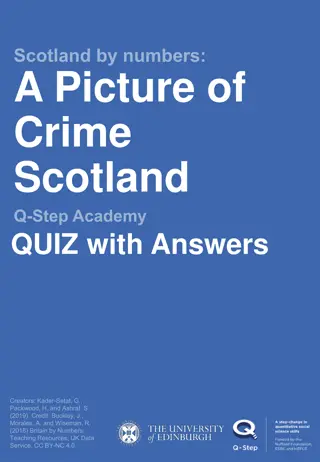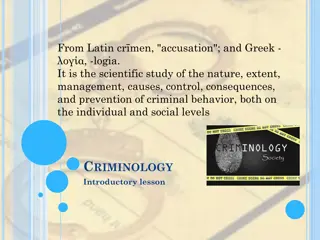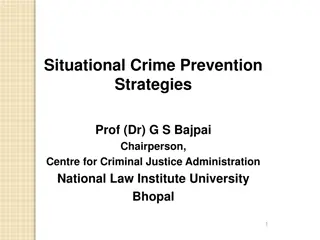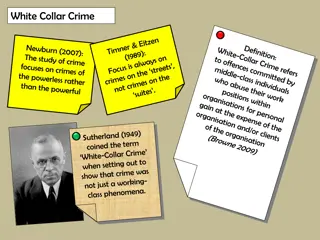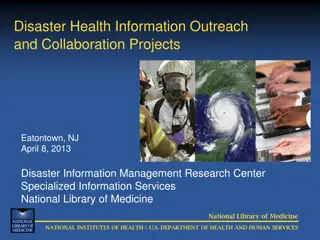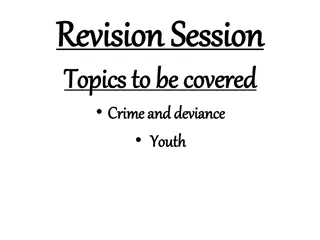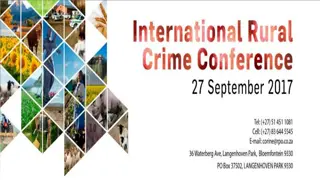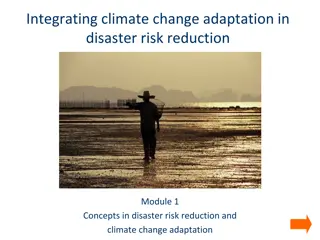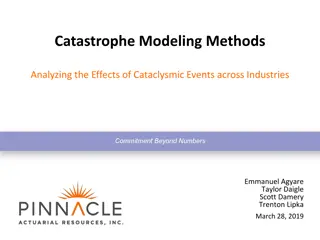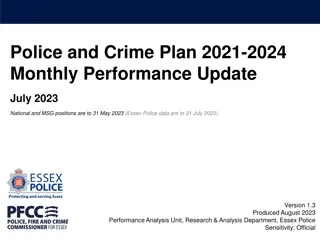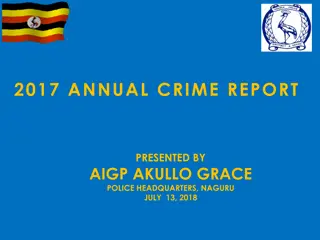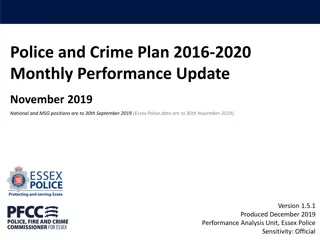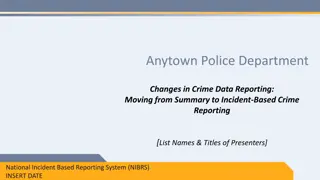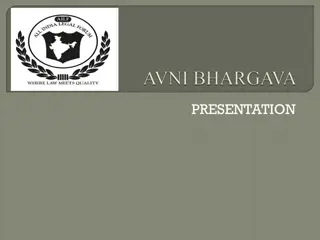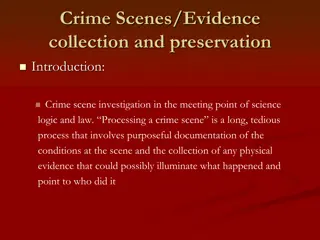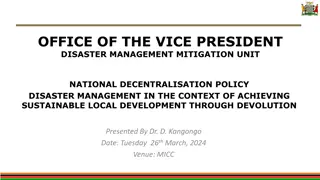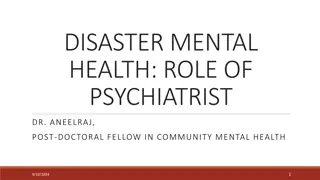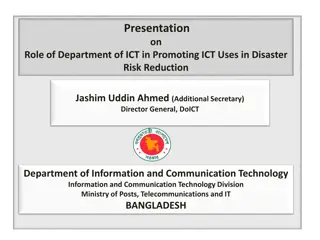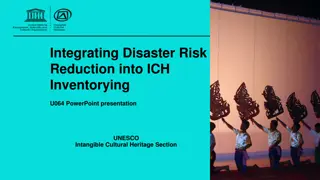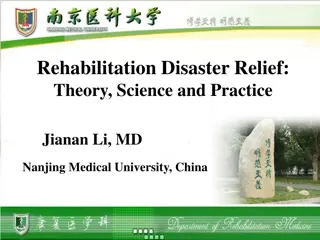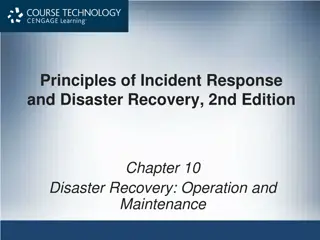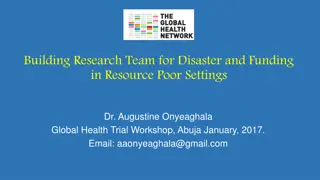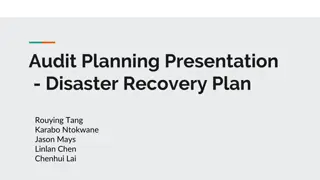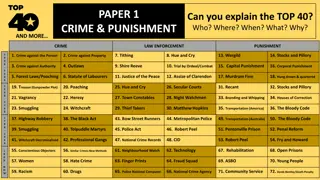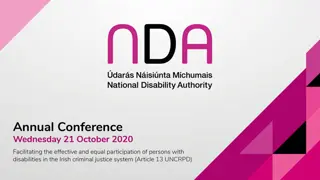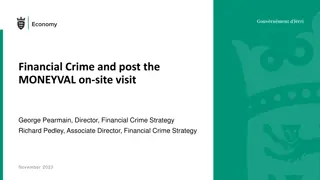Criminology of Disaster: Exploring Crime Patterns in Times of Catastrophe
Delve into the fascinating intersection of criminology and disaster scenarios through historical case studies such as Hurricane Hugo in St. Croix, the impact of Hurricane Sandy in Brigantine, and the chaos following the San Francisco earthquake. The complexities of social disruption, looting behaviors, and law enforcement responses in the aftermath of natural calamities are analyzed with a critical lens. Gain insights into the dynamics of crime during crises and the social implications of such events.
Download Presentation

Please find below an Image/Link to download the presentation.
The content on the website is provided AS IS for your information and personal use only. It may not be sold, licensed, or shared on other websites without obtaining consent from the author. Download presentation by click this link. If you encounter any issues during the download, it is possible that the publisher has removed the file from their server.
E N D
Presentation Transcript
Looking Back To Go Forward: Toward a Criminology of Disaster Kelly Frailing and Dee Wood Harper
Definition of Disaster Little agreement, at least three dozen published definitions After WWII, idea that disasters cause social disruption emerges Quarantelli takes up the mantle, his definition of a disaster is entirely social Disasters have a sudden onset, disrupt collective routines, result in unplanned courses of action taken in response and are a danger to social objects Current research paradigm of disasters is that disasters are social phenomena and that they reflect the ways in which social changes occur Disagreement still exists, especially as new types of disasters are observed and consensus becomes all the more important Trans-system social ruptures, TSSRs (SARS in 2003) and social amplification of crises and disasters, SACDs (heat waves, ice and snow storms, blackouts)
Crime and Hurricanes Hurricane Hugo, St. Croix, U.S. Virgin Islands September 17, 1989 Category 4 Widespread destruction of support systems and physical structures Massive looting of all types of stores, property National Guard sent in to quell unrest Social conditions on the island contributed to the amount of looting
Crime and Hurricanes Hurricane Sandy, Brigantine, NJ, North of Atlantic City October 29, 2012 Reduced from hurricane to a post-tropical nor easter at impact 14-foot storm surge in NY Harbor Airports, subway, Wall Street all shut down 8 million people across 15 states lose power Major gas shortages lasting days Looting: Dramatic increase in burglary (and only burglary) in the month after the storm compared to the month before Anecdotal reports of fraud
Crime and Earthquakes San Francisco earthquake and fire, California April 18, 1906 at 5:12am 8.3 magnitude Morris (2002) data source: firsthand account 300,000 left homeless, estimated death toll 1,500 Dynamite used to fight fires Soldiers ordered to shoot looters and examples of looting Jewelry from corpses Pillaging in Chinatown
Crime and Earthquakes Kanto earthquake, Japan September 1, 1923 just before noon 7.9 magnitude 91,000 dead from quake and fires, 381,000 homes destroyed Rumors of Korean uprising follow, spread by government Japanese police, military and civilians killed 6,000 Koreans
Crime and Earthquakes Tangshan earthquake, China July 27, 1976 7.5 magnitude, followed by severe aftershock 15 hours later 240,000 killed, 800,000 injured One of the deadliest earthquakes of the last four centuries
Crime and Earthquakes Tangshan earthquake, China (continued) Zhou s (1997) data sources: official statistics and retrospective survey Testing social disorganization Crime rate in Tangshan higher in 1976 than in 1975 and in 1977 Mass looting was the most common crime in the earthquake s wake Causes of mass looting rooted in earthquake itself, death and destruction, but causes of individual theft and mass violence rooted in disorganization caused by the earthquake Contrasts idea that looting only occurs after civil disturbances and not natural disasters
Crime and Earthquakes The Bam Earthquake, Iran December 26, 2003 6.6 magnitude Death toll of 31,600, higher due to timing of the strike (pre- dawn) and poorly constructed buildings From Ibrion et al (2015), widespread looting reported in survivors accounts years later All narratives identified outsiders as the looters Took jewelry, electronics, Persian rugs and other valuables from the dead and the living Rescue convoys also looted
Crime and Earthquakes Haiti Earthquake January 12, 2010 7.0 magnitude Between 200,000 to 250,000 dead Over 634,000 were still living in squalid displacement camps over a year and a half after the earthquake struck Two types of crimes observed after the earthquake: crimes fueled by desperation and gang-related crimes Desperation crimes include stealing water from orphanage, sexual intimidation of/violence against women with food coupons Gang-related crimes by gang members who reestablished power when the prison was destroyed
The full set of PowerPoint slides is available upon adoption. Email bhall@cap-press.com for more information.



